20 Feb La Suite presents an artwork by Celso Lagar
The star lot of La Suite auction, which will take place on February 22, is undoubtedly Desnudo femenino en interior (O/L, 100 x 73 cm), lot number 34 of the auction. The canvas corresponds to Celso Lagar (Ciudad Rodrigo, 1891 – Sevilla, 1966), and presents his signature and date, 1917, on the back of the work. It belongs to his Parisian period, where he had the opportunity to meet great international artists of the time such as Max Jacob, Derain, Modigliani,… but also with great dealers such as Paul Guillaume and Zborowski. These contacts trigger in him a clear immersion in the avant-garde that positively affects his art, as expected.
In Spain, on his return in 1914, he is considered as “fauve”, something that we see clearly in Vell i nou as a result of his exhibition in the Laietanas galleries in Barcelona: “Lagar is one of the fauves of a greater value that has had Spain, is giving a real lesson in energy and renewal to many of our artists, who still close their eyes, for fear when they have to jump into the water.” The canvas comes from a private collection, being bought in 1944. Not counting the works of the artist that have already been auctioned in recent years in our country, it is worth mentioning the sale of Hommage à Guynemer, an oil on canvas, at Christie’s Paris in November 2012, with an auction price of € 120,000. It will be auctioned for € 32,000, a very attractive price for a work of these characteristics (see).
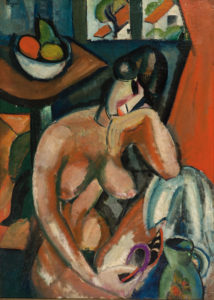
LOTE 34: LAGAR, CELSO (1891 – 1966). Desnudo femenino en interior. Óleo sobre lienzo. 100 x 73 cm. Precio de salida: 32.000€.
Nearby we can see lot 36, entitled Helios (72 x 11 x 10 cm) and belonging to Honorio García Condoy (Zaragoza, 1900 – Madrid, 1953). It is a bronze sculpture from 1948, with the stamp of the founder E. Godard Fondeur of Paris. It was made with the technique of lost wax, and there are only ten copies in the whole world. It appeared in the catalog of the exhibition homage of the Sástago Palace of Zaragoza on the occasion of the centenary of the author’s birth in 2000. A copy of this is kept in the Parisian Pompidou. It will be auctioned for € 6,500 (see).

LOTE 36: GARCÍA CONDOY, HONORIO (1900 – 1953). Helios. Escultura en bronce a la cera perdida. 72 x 11 x 10 cm. Precio de salida: 6.500€
We continue, following the order of the catalog, with lot 38. It corresponds to an oil on canvas of Orlando Pelayo (Gijón, 1920 – Oviedo, 1962) entitled Radiographie de Almadén (81 x 100 cm). It is signed and dated between 1959 and 1962, thus framed in what Pelayo called “absence cartography”, related to its approach to the abstract. He talks about it in the book Pelayo, written by Gérard Xuriguera: “It is true, I came to it by an unconscious desire to reconstitute, starting from the origins, the landscapes of my childhood, Leaving my memory free, I recovered, with my spirit and my brush, the peculiar topographies of La Mancha, Extremadura and Asturias. I have done abstract, but without intending it; however, it did not change my way of painting. I have always gesturally attacked the canvas.” The work will be auctioned for € 3,000 (see). On the other hand, lot 45 is an ink drawing on a photograph by Salvador Dalí (Figueres, 1904 – 1989). The work has dimensions of 38 x 29 cm, and is signed three times and dated in 1975. It will be auctioned for € 2,000 (see).
- LOTE 38: PELAYO, ORLANDO (Gijón, 1920 – Oviedo, 1962). Radiographie de Almadén. Óleo sobre arpillera. 81 x 100 cm. Precio de salida: 3.000€.
- LOTE 45: DALÍ, SALVADOR (Figueres, 1904 – 1989). Dibujo a tinta sobre fotografía. 38 x 29 cm. Precio de salida: 2.000€.
From Jules Leleu (France, 1883 – 1961) we see a cabinet in lemongrass (140 x 177 x 52 cm). It was made in Paris in 1953, and numbered 4081. It has a label that indicates that, indeed, the design is by J. Leleu and that the furniture was executed under its guidelines: attached numbering, date and manuscript. It will be auctioned for € 2,500 (see). Lot 64, on the other hand, is a suite of eight Christian Krass chairs in solid oak with seat in imitation leather, measuring 83 x 48 x 48 cm. It will be auctioned for € 2,000 (see). Finally, from the decorative art section, we see lot 7: large glass vase of cameo with acid decoration, specifically of peacocks in a landscape of low forest and classical ruins. It is dated around 1910, and belongs to André Delatte (Châtenois, 1887 – Toulouse, 1953). It measures 37 cm and its starting price is € 550 (see).
- LOTE 57: LELEU, JULES (1883 – 1961). Cabinet en madera chapada de limoncillo. 140 x 177 x 52 cm. Precio de salida: 2.500€.
- LOTE 64: KRASS, CHRISTIAN (1868 – 1957). Suite de ocho sillas en madera de roble macizo y asiento en símil de cuero. 83 x 48 x 48 cm. Precio de salida: 2.000€
- LOTE 7: DELATTE, ANDRÉ (1887 – 1953). Jarrón de vidrio camafeo con decoración al ácido. 37 cm. Precio de salida: 550€.
Más noticias de Arte
Especialista en pintura moderna, tasadora y perito. Graduada en Historia del Arte por la Universidad de Salamanca.



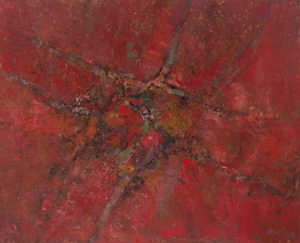

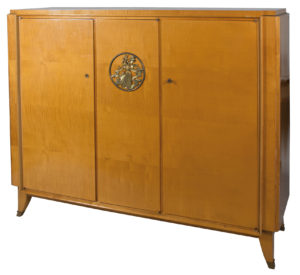
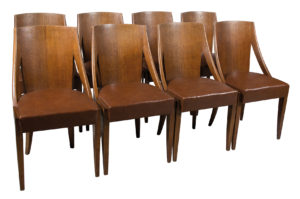


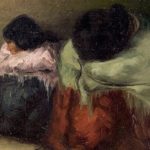


No Comments